The past two weeks have been traumatic in grain markets. There seemed to be no stopping the rise and before you knew it, there seemed to be no stopping the fall.
Industry talk had green barley below €270/t at harvest and it might not hold at that. Prices moved to within €50/t of last year's green price and all of a sudden, production margins were down €30/t.
Merchants acknowledged that the value of likely grain sales would not cover the additional expenditure, relative to last season.
Most tonnes this harvest have to carry an additional €80/t higher production cost made up of fertiliser, energy, transport, chemicals, etc, and the price had quickly dropped to €30 below this value.
Cover the difference
Forward sales would not cover the difference. There is relatively little sold anyway – seems that too many people were waiting for €400/t to spur them into action.
The buyers were not buying either. Now they have much cheaper product available and they will most likely cash in the option or maybe they will choose to wait until prices are lower again.
It is very difficult to know what the right thing to do is
It is very difficult to know what the right thing to do is. I would have been unwilling to sell when futures bottomed out at €313/t on Wednesday of last week.
Not much had changed in the fundamentals of supply and demand, so why had prices fallen that far?
The quick answer is that no one is sure. There was a bit of immediate pressure on maize because of the higher area estimate in the US, growing conditions there were improving and South America was indicating a big maize crop.
So, in a very short space of time, maize sentiment had swung from deficit to surplus, but there was still a big uncertainty over demand.
No swing on wheat
There was no such swing on wheat. The EU numbers were low, but then harvest may not be as badly impacted by weather as some predictions had estimated – that changes sentiment.
But players in the market believed that the major driver of the fall related to markets in general and not just grain. If that was true, the sell-off would stop at some point and it did.
Market turned again
It seems that Wednesday saw the bottom of the market, for now at least. Volatility is not gone, but the trend in the MATIF futures is upwards once again.
Whether physicals follow or not depends on what maize does and it too has trended upwards again, for the moment at least.
December MATIF contracts went as high as €330/t on Thursday (closed at €316/t on Wednesday night) and €345/t on Friday. But still the trend is upwards again for now.
Where will the market settle? That remains a good question, even though we are now in harvest.
While it is unlikely to return to the dizzy heights of mid-May, it also unlikely to dip back to Wednesday’s close. It seemed stronger on Friday.
Any resolution on Ukrainian exports seems less likely. Maize is rising in parallel, so the milling wheat market seems not to be taking our feed wheat prices on a merry dance.
Regardless of what happens on the futures market, Irish grain buyers will need to keep an eye on the maize market, both now and into the months ahead.
If the Americas turn in a very big maize harvest, as looks to be potentially possible at the moment, then that could impact on global maize supply and price.
But we must also remember that while the US maize area is higher than had been anticipated, it is still back about 3% on last year, so it would take a hell of a yield increase to fill that gap.
One other thing that is important to remember is that the world trades grain on a dry 15% moisture basis. There is nothing new in that, but we had become accustomed to working with a €30/t differential between dry and green prices.
This is not going to be the case this year. For the past number of months, quotes from the trade were factoring in this differential at €45 to €50/t. It may not be that big now that prices have eased back, but it will not be €30/t either.
The difference between green and dry prices is the cost of the moisture reduction and the value of the weight loss. This obviously varies with the value of the tonne, the cost of diesel and the efficiency of the drying system.
Table 1 below only calculates the value of the weight loss because drying systems can vary considerably and people cost labour differently.
It takes a tonne of grain delivered at either 20% or 23% moisture. At 20% moisture 1,000kg (1t) of grain will dry down to 941.18kg, meaning that 58.82kg is lost as water.
Valued at last year’s grain price of €250/t, the value of this weight loss is €14.71/t, but if the price is €350/t, the value of the weight loss is €20.59/t.
If the grain is delivered at 23% moisture, the value of the 94.12kg of weight loss is €23.53 at €250/t and €32.94 at €350/t.
This will inevitably be reflected in harvest price adjustments for moisture levels above and below 20% moisture.
It must also be said that these losses do not include the invisible weight loss, which occurs between drying and loading out.



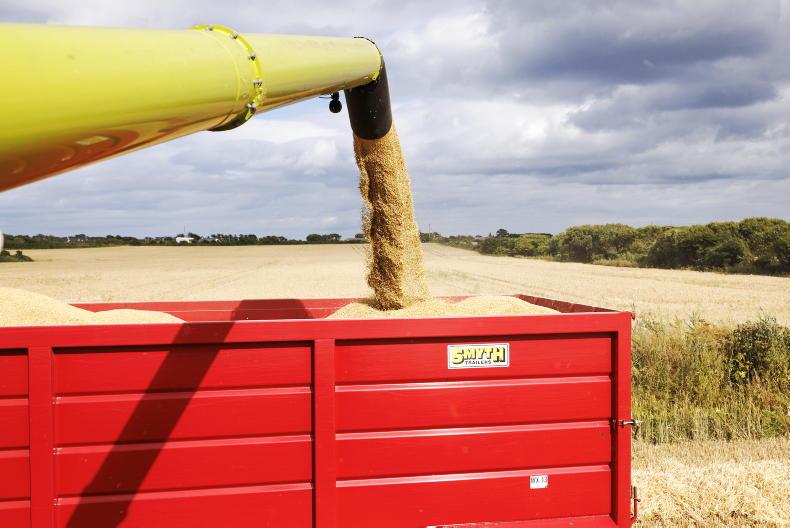

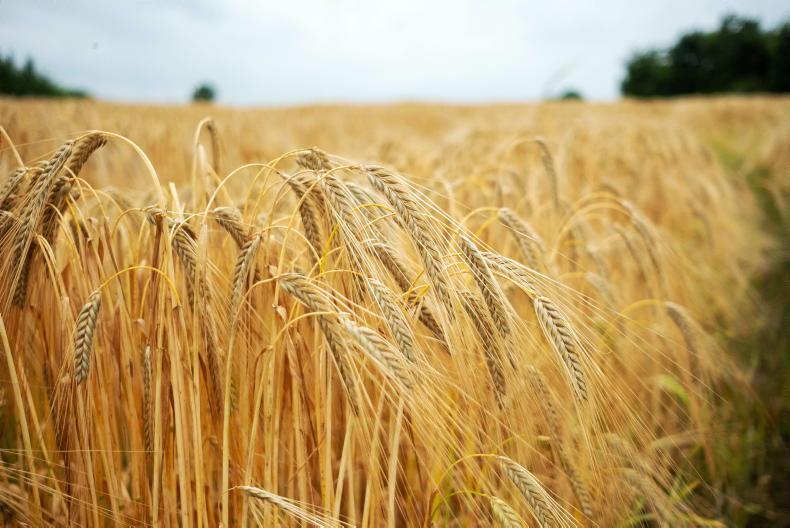

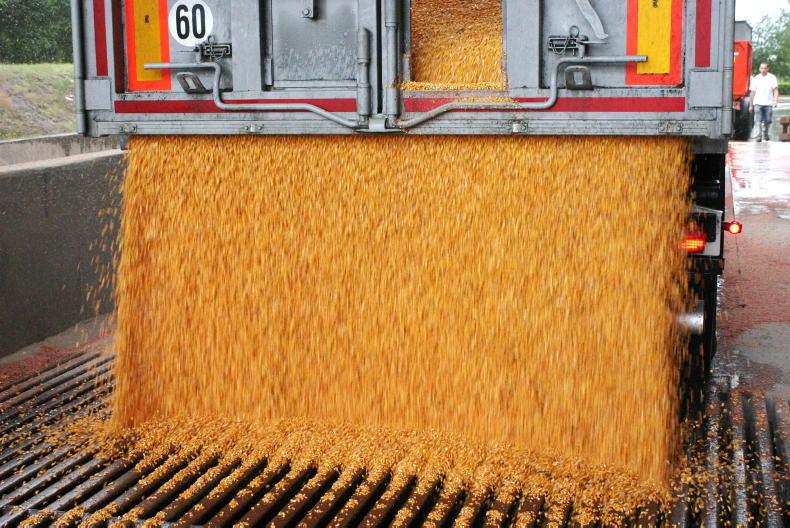
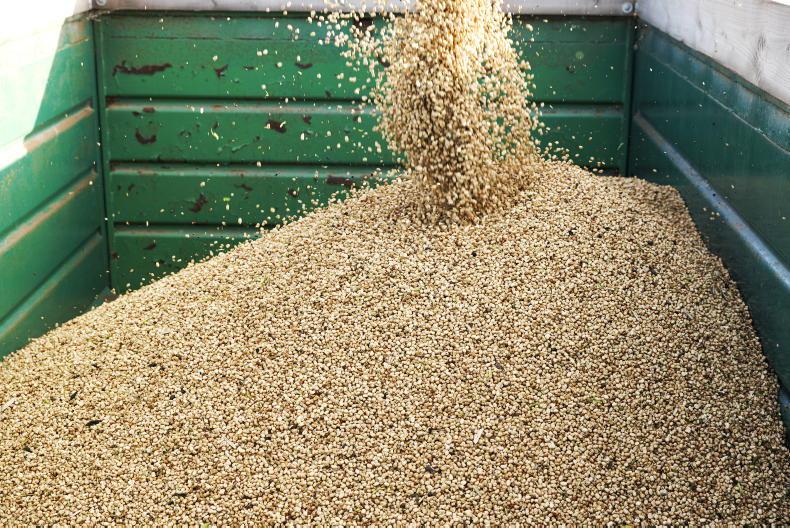
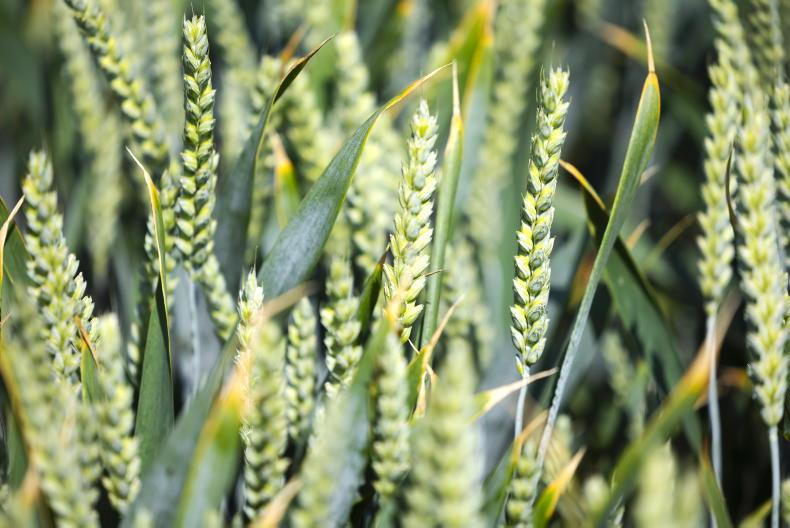
SHARING OPTIONS